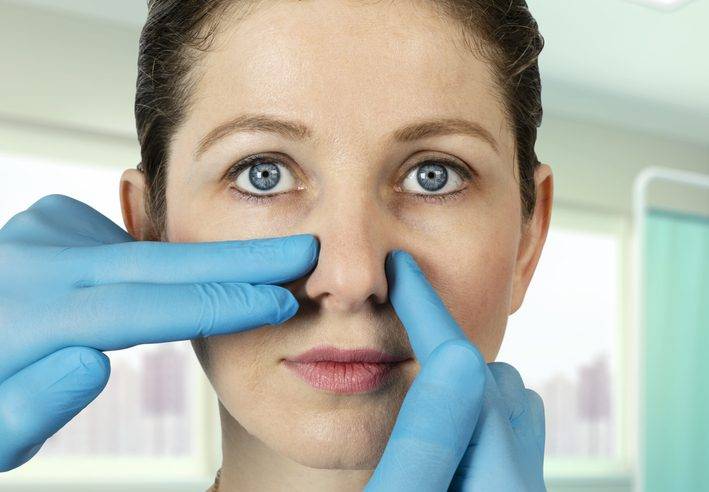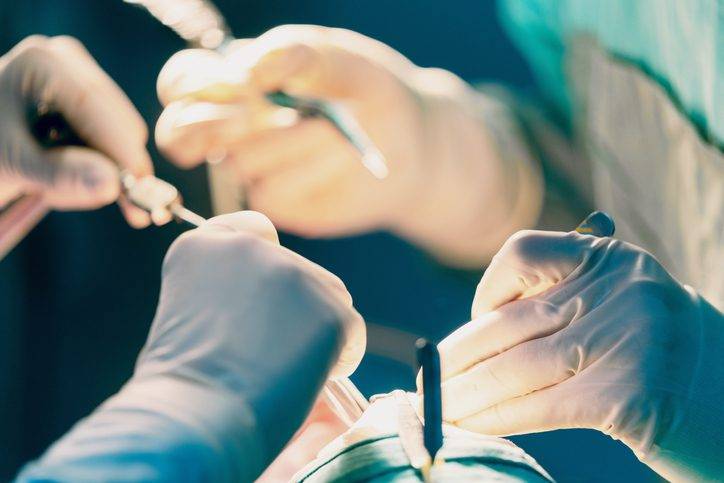Septoplasty
The Deviated Septum Surgery That Helps You Breathe Easier
What’s a deviated septum, and do you need surgery?

The septum is a thin wall made of bone and cartilage that separates the two sides of your nose. When that wall is crooked—often present at birth, or from trauma to the nose—it’s called a deviated septum. People rarely have a perfectly straight septum, so being told you have a deviated septum may not be a problem, unless it is blocking one or both sides of your nose.
On its own, a deviated septum may not be a problem. But it can contribute to serious health issues that include:
- Chronic or recurrent sinusitis (sinus infections)
- Sleep apnea
- Difficulty breathing through the nose
- Nosebleeds
- Headaches
A deviated septum can also causepostnasal drip, as well as nasal congestion.
If you regularly suffer with any of the above symptoms, you should consult an otolaryngologist (also known as an ENT) to see if your deviated septum is the cause, and whether surgery could relieve your symptoms.
Septoplasty can help you breathe better, feel better, and sleep better
Surgery to repair a deviated septum is called septoplasty. It’s a highly effective procedure that:
- Opens your nasal passageways so you can breathe easier.
- Greatly reduces sinus infections.
- Eliminates some causes of sleep apnea.
- Controls nosebleeds.
- Decreases headaches caused by nasal blockages.
In almost all cases, deviated septum surgery is performed through the nostrils, without outside incisions. This is usually done under general anesthesia. Your surgeon will readjust your septum and possibly remove some tissue. The procedure typically takes less than an hour, and septoplasty recovery usually takes 3-7 days.

Your doctor may recommend a septoplasty with turbinate reduction for best results. Turbinates are small structures inside your nose that regulate temperature and moisture. If they become swollen or displaced, they can block nasal passageways and contribute to sinus infections and sleep apnea. If your turbinates are causing problems, your doctor may recommend performing septoplasty with turbinate reduction at the same time. Turbinate reduction is a fast and painless procedure, that adds less than 5 minutes to the overall procedure.
Septoplasty FAQs
- What about septoplasty complications?
As with any surgery, there is the risk of bleeding and infection. However, the rates with septoplasty are very low. In very rare instances, there may be a cerebrospinal fluid leak, a brain fluid discharge. There’s also a positive “complication” of septoplasty: Your voice may change for the better. Opening your nasal passageways creates space that can add resonance to your voice.
- Is there an alternative treatment for deviated septum?
It depends. Remember, a deviated septum by itself is not necessarily a problem. If you are experiencing nasal blockage you think is related to a deviated septum, it’s important to be examined by an experienced doctor, as your condition may be worsened by allergies that could be addressed by medication. And in cases of sinusitis, a minimally invasive balloon sinuplasty procedure may address your issues.
- Septoplasty vs rhinoplasty?
The two procedures are quite different and performed for different reasons, though they can often be performed together. Rhinoplasty changes the cosmetic appearance of the nose. Septoplasty is surgery for a deviated septum, to improve nasal breathing. That said, there may be times where septoplasty does improve the appearance of the nose, especially in cases where the septum is significantly crooked. That’s why it’s important to have a doctor who understands and appreciates the aesthetics involved with septoplasty, or even better, a surgeon who is both an ENT and a cosmetic surgeon, like Dr. Marc Kayem.
Experience is critical for a successful septoplasty
Septoplasty is a delicate procedure, requiring skill and experience. A proper diagnosis is key, as deviated septum surgery may not always solve your nasal issues if they are also due to something else. And as mentioned, septoplasty may sometimes change the shape of your nose, so it’s wise to use a doctor with experience in aesthetic medicine as well as otolaryngology.
When you choose Dr. Marc Kayem for your septoplasty, you get the best of both worlds. A board-certified otolaryngologist and cosmetic surgeon, Dr. Kayem has performed thousands of successful septoplasty procedures during his 25+ year career, providing relief to thousands of clients in Los Angeles, Las Vegas, and abroad.
If you need relief from a nasal blockage, sinus infection, or sleep apnea or want to consult a specialist about your deviated septum, choose a warm, experienced doctor, with experience in both otolaryngology and cosmetic surgery. Contact Dr. Marc Kayem today.
